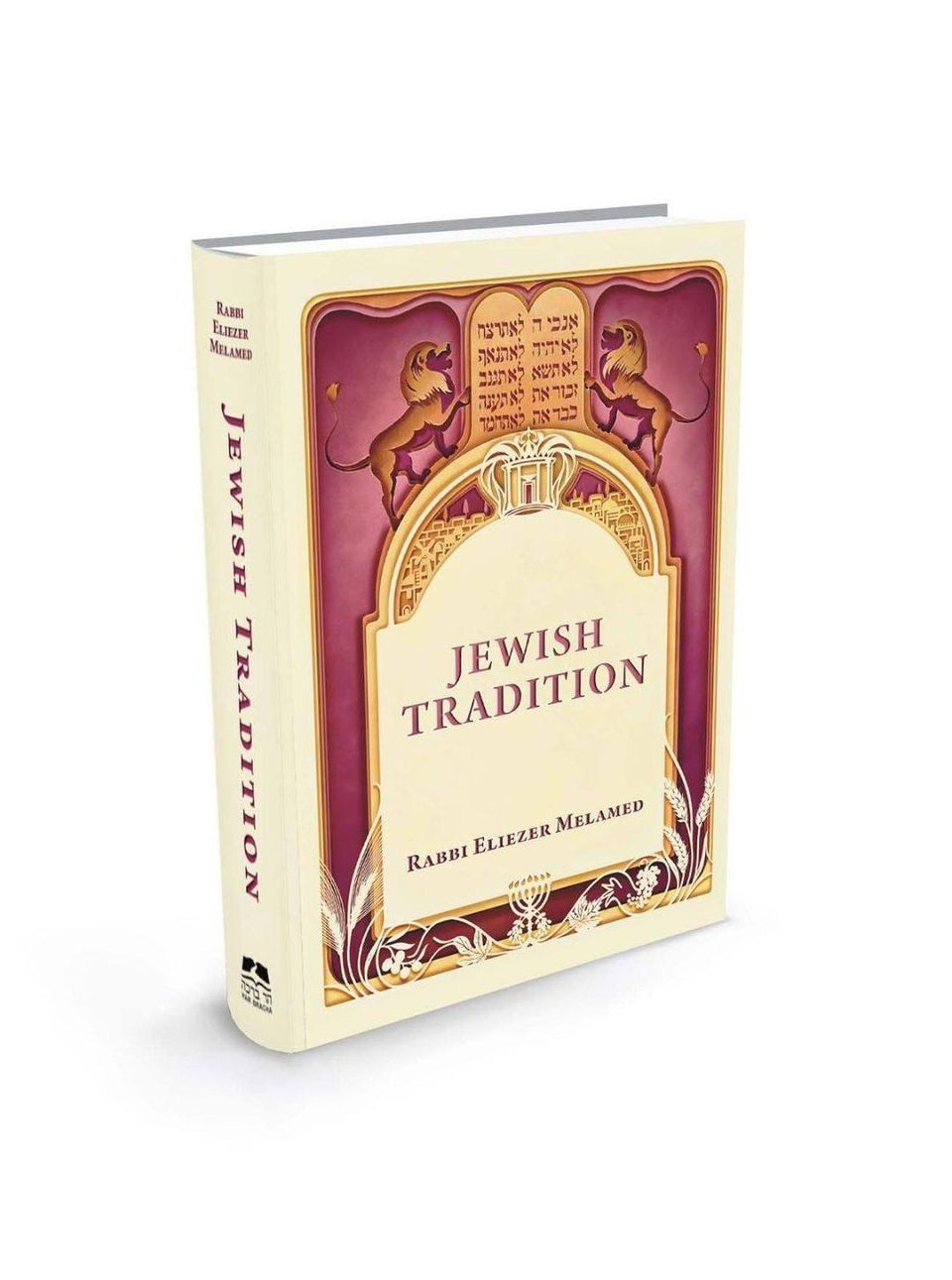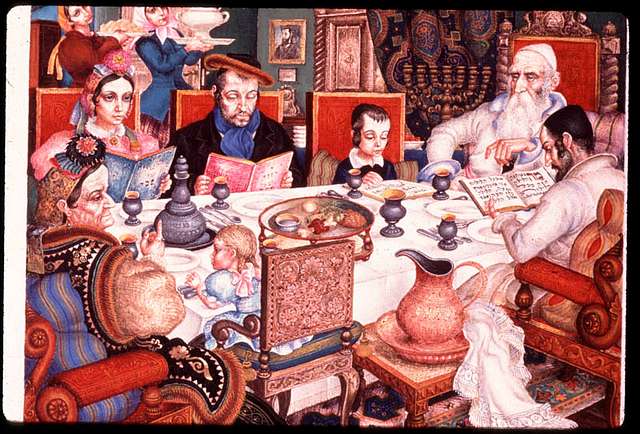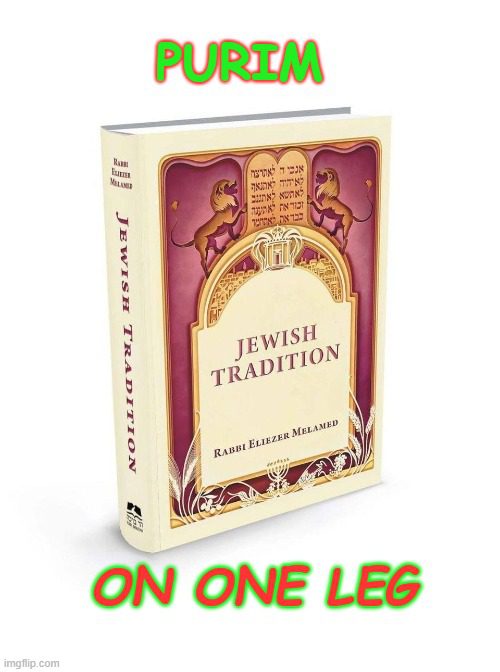THE LAWS OF PESACH

From the book “Jewish Tradition” by HaRav Eliezer Melamed, Head of the Har Bracha Yeshiva and author of the series “Peninei Halacha.”
[Dedicated in the memory of Yitzchak ben David (Robert ‘Bob’ Behar) on his Yahrtzeit]
Chapter 30 – Passover (Pesaĥ)
- The Festival of Matzot and the Festival of Pesaĥ
The Torah has two names for the holiday of Passover, to indicate its dual significance: Ĥag Ha-matzot (the Festival of Matzot) and Ĥag Ha-Pesaĥ (the Paschal Festival, or Passover).
Ĥag Ha-matzot represents faith, since during the Exodus from Egypt, God’s sovereignty over the world was manifested in the clearest possible way. Since matza is a remembrance of the Exodus (section 4 below), eating it at the Seder reminds us of our faith in God’s sovereignty.
Ĥag Ha-Pesaĥ represents the Jewish people’s unique spiritual capacity. In all of the plagues, the distinction between the Egyptians and the Israelites was conspicuous as the Egyptians were struck while the Israelites were not. The purpose of the Paschal offering (brought the afternoon before Passover) is to remind us of this exclusivity. In the merit of this offering, when the destroying angel killed the firstborn in every Egyptian home, he passed over (pasaĥ) every Israelite home.
These two fundamental concepts, faith and Israel, are interdependent. The Jews are blessed only because of faith, and monotheistic faith cannot be expressed in the world without the Jews.
Passover’s third name, given by the Sages, is the Festival of Freedom. Following the Exodus, the Israelites enjoyed freedom on two levels: freedom from physical enslavement to Egypt, and freedom from Egyptian culture, which enslaved people to their baser desires (2:11 above). Thanks to the Exodus, the Israelites were now able to accept the Torah. Its guidance allows people to free themselves of their enslaving desires, and to become truly free.
- Ĥametz and Matza – Arrogance and Humility
The ĥametz, prohibited on Passover, is formed by the rising of dough and symbolizes arrogance and pride, which inflate a person beyond their true size. By contrast, matza represents humility, remaining in the original size God created. If ĥametz hints at arrogance, why isn’t it forbidden all year round?
The answer is there are two types of pride. The first is when people have an exaggerated sense of self-worth, thinking they are wiser, stronger, or more successful than they actually are. Any intelligent person understands this type of pride impairs a person’s judgment and harms the ability to actualize one’s potential. Clearly, such pride is inappropriate all year long, and has nothing to do with the prohibition of ĥametz.
The second type of pride, which corresponds to ĥametz on Passover, is one’s pride within the relationship with one’s Creator. Jewish faith is predicated on the acknowledgment that God created the world and determines its destiny, and everything at its root depends on Him alone. Even though God gave people the ability to improve and develop the world, their power is limited to the “branches,” not the divinely created roots. It is not people but God Who created life and the world, Who created human beings in His image, and Who gave His Torah to the Jews. Therefore, when people think about the fundamentals of creation and life, they must wrap themselves in humility. Just as someone who considers suicide is overstepping one’s bounds, because it is God Who is in charge of life and death, so too someone who imagines human thought determines faith is overstepping. Eating ĥametz on Passover is comparable to this hubris, this forbidden pride.
Passover is designed to instill in us the fundamentals of faith. Whenever an aspect of the divine is revealed in the world, it happens miraculously. This makes it clear the event is not natural but supernatural, not human but divine. Thus, the Exodus was accompanied by signs and wonders, to make it clear to the world that Jewish chosenness is something divine. Similarly, the Torah was given with open miracles, to a generation sustained by miracles for forty years in the desert, to make it clear this was all divine. In other words, we did not invent the fundamentals of faith but we do absorb them.
Therefore, on Passover, which is meant to inculcate the fundamentals of faith, we are commanded to be extremely careful to avoid eating even a morsel of ĥametz, symbolizing hubris, but to eat matza, symbolizing humility and faith. During the rest of the year, when we are involved in developing and improving God’s world, eating ĥametz is desirable and praiseworthy.
- Defining Ĥametz
Ĥametz refers to any one of the five grains (wheat, barley, oats, rye, and spelt( that ferments after coming into contact with water. These grains are used to make bread, the staff of life. The Sages instituted the special blessing “Who brings forth (Ha-motzi) bread from the earth” before eating bread (23:7 above), and Birkat Ha-mazon afterwards (23:8-9). Fermenting dough is meant to improve it, by making the bread tasty and easy to digest.
Two types of leaven are forbidden on Passover: ĥametz and se’or. Ĥametz is standard dough, which rises and is made into bread and cakes. To produce higher-quality bread, se’or (sourdough) is added to the dough. Se’or is produced by letting dough ferment for so long it becomes sour and inedible, but it can be used as a catalyst to cause dough to rise faster. (Nowadays, yeast is usually used for this purpose.) In other words, ĥametz is leaven meant to be eaten, while se’or is a leavening agent used in preparing baked goods. Colloquially, both types are referred to as ĥametz.
The Torah treats ĥametz on Passover so seriously, it lists four commandments to restrict it:
- It is forbidden to eat ĥametz or derive any benefit from it.
- It is forbidden to see ĥametz.
- It is forbidden for Ĥametz to be found in our possession.
- It is a mitzva to destroy our ĥametz before Passover.
A Jew who owns ĥametz on Passover transgresses, even when deposited with a non-Jew. However, if ĥametz is owned by a non-Jew who is responsible for it, it may be kept in the home of a Jew, as long as it is stored in such a way there is no chance a Jew will accidentally eat it.
- What Distinguishes Matza from Ĥametz
If flour (of any one of the five grains) is mixed with water, rapidly kneaded, and immediately put into an oven, the dough does not have time to rise. This is matza, the food we are commanded to eat at the Passover Seder, to remember the Exodus from Egypt and the haste with which the Jews left unable to wait for the dough to rise and so they made matza. As is written about the Israelites, “They baked unleavened cakes of the dough that they had taken out of Egypt, for it was not leavened, since they had been driven out of Egypt and could not delay” (Exodus 12:39).
The verse describes matza as unleavened bread, which implies it is a type of bread, and thus, like bread, must be made from one of the five grains. Although rice is similar to the five types of grain and it does rise, it does not undergo a complete fermentation process. Therefore, the prohibitions against ĥametz on Passover do not apply to rice, and matza made of rice cannot be used to fulfill the mitzva at the Seder.
As long as dough is in motion being kneaded, it does not become ĥametz. However, once it sits motionless for eighteen minutes, the leavening process begins, and all the ĥametz prohibitions apply to it. In a hot environment, the leavening process is accelerated, and the dough may become ĥametz in even less than eighteen minutes. Cracks appearing in the dough are a physical indication it has become ĥametz, even if it has been less than eighteen minutes since the dough was kneaded; apparently either the bakery or the dough was hot enough to accelerate the leavening process.
- Getting Rid of Ĥametz
The Torah commands us to dispose of all of our ĥametz before Passover. The biblical prohibitions on eating or benefiting from ĥametz begin midday of the 14th of Nissan, but the Sages extended these prohibitions. Consequently, benefiting from ĥametz becomes prohibited an hour before midday, while eating it becomes prohibited two hours before midday. The exact times can be found in standard Jewish calendars.
According to Torah law, one may dispose of ĥametz either by mentally nullifying it (renouncing ownership) or by physically destroying it. However, to make absolutely certain people would dispose of their ĥametz, the Sages required doing both. In practice, the way we dispose of ĥametz consists of four stages: searching for ĥametz (bedikat ĥametz) on the night of the 14th, nullifying it (bitul) that night, destroying it (biur) the following morning, and nullifying it again, more comprehensively, that morning. We will elaborate in the next two sections.
There are two more ways for a person to dispose of ĥametz: by selling it to a non-Jew (section 8 below), or by removing it from the home and declaring it ownerless. These methods work because the prohibitions apply only to ĥametz we own.
- The First Stage: Searching for Ĥametz
On the night of the 14th (the night before Passover begins), there is a mitzva to search all the places in the home where ĥametz might be. These include the kitchen and living room and all the rooms where people eat, as well as any room, porch, or storage space where people sometimes bring ĥametz. Even if the home was cleaned well for Passover, everywhere relevant must still be searched to confirm that everywhere was properly cleaned. Even when someone sold one’s ĥametz to a non-Jew, one must still search to confirm that the sold ĥametz has been put away and there is no chance people will come across it and eat it by mistake.
A candle or flashlight is used for the search, so ĥametz in hard-to-see corners can be found. Before beginning the search, we recite this blessing: “Blessed are You, Lord our God, King of the universe, Who has sanctified us with His mitzvot and commanded us about destroying leaven.”
- The Other Stages: Nullifying the Ĥametz and Destroying It
Right after completing the search, we mentally nullify any ĥametz which might still be in our home, but of which we are unaware. To make this easier, we read a formal declaration of nullification. This declaration is in Aramaic, the language understood by most Jews at the time it was formulated. Those who do not understand the Aramaic should recite it in a language they do understand. This is a standard English translation of the declaration:
All ĥametz and se’or in my possession, which I have not seen and have not destroyed, shall be nullified and become ownerless, like the dust of the earth.
This nullification must be done wholeheartedly, meaning we must dissociate from any ĥametz we still own. Furthermore, even if we discover after Passover that we have owned ĥametz inadvertently, we resolve not to benefit from it, because we consider it as unimportant as dust.
On the morning of the 14th, after breakfast, all remaining ĥametz should be collected and destroyed. This may be done by flushing it down the toilet or putting it in a dumpster. However, there is a widespread custom to burn the ĥametz.
Right after this, we read a second declaration of nullification. It applies to the ĥametz left over after the meals (dinner and breakfast) eaten since the search. For this reason, the formulation of this declaration is slightly different from the previous one. Here is a standard English translation:
All ĥametz and se’or in my possession, which I have seen or have not seen, which I have destroyed or have not destroyed, shall be nullified and become ownerless, like the dust of the earth.
Anyone who is going away for Passover must search the home on the last night they spend in it. If this search is done at the standard time (the night of the 14th), they recite the blessing. If at an earlier date, the blessing is not recited.
Anyone who finds ĥametz in their home on Passover must immediately destroy it, either by burning it or by breaking it up into little pieces and flushing it down the toilet.
- Selling Ĥametz
Sometimes, people, especially grocery store owners, find themselves with a large quantity of ĥametz before Passover. If they do not mind suffering a loss, they can burn it or give it as a gift to a non-Jew. However, if they do not want to suffer this loss, they can sell the ĥametz to a non-Jew before Passover. Here is how it is done:
A friendly, trustworthy non-Jew buys the ĥametz at full price and puts down a cash deposit. Both sides agree that if the non-Jew wishes to sell the ĥametz back after Passover, the Jew will return the deposit and buy back the ĥametz. This way, the non-Jew will not suffer any loss. (In the unlikely event the non- Jew decides to keep the ĥametz after Passover, the buyer would have to pay the rest of the money.)
Since the sale is legally and halakhically binding, and the seller wholeheartedly agrees to give the ĥametz sold to the non-Jewish buyer should he ask for it, the ĥametz belongs to the non-Jew over Passover (even if the buyer has no use for it). This means the Jew cannot transgress the prohibitions of owning ĥametz. The sold ĥametz should be placed in a cabinet which is then locked or taped shut, and preferably labeled (as sold ĥametz), so no Jew will accidentally eat it.
It is advisable for all Jews to sell their ĥametz, since some food products may contain small amounts of ĥametz. On one hand, it would be a shame to get rid of them because of this possibility. On the other, since they might actually contain ĥametz, they must not be kept over Passover. Therefore, to avoid doubt, the best policy is to put them away and have in mind to include them in the sale.
Usually, people fill out a form authorizing their rabbi to sell their ĥametz to a non-Jew. Some rabbinic organizations offer this service through their website.
- Koshering Kitchenware
Kitchenware used all year for ĥametz may not be used for Passover unless it is thoroughly cleaned and then kashered. Utensils that one does not plan to use on Passover should be cleaned and put away, so no one accidentally uses it during the holiday.
The most basic principle of koshering is that forbidden taste is purged in the same manner it was absorbed. (During the year, this principle applies to the taste of non-kosher food. Before Passover, it applies to the taste of ĥametz.) There are three ways in which ĥametz may have been absorbed:
- Items used with boiling liquids – such as pots and some cutlery – are kashered by immersing them in boiling water for a few seconds.
- Items that absorbed ĥametz through direct exposure to fire without a liquid medium – such as skewers and baking pans – are kashered by heating them with fire. Ideally, this fire should reach a temperature of 400ºC (about 750ºF). If this might ruin the items, they can be kashered with fire at the same temperature at which they were used for ĥametz.
- Items used only for cold ĥametz – such as some dishes – may be kashered by cleaning them and rinsing them off with cold water.
The same process followed to kasher kitchenware for Passover is used during the rest of the year to kasher dishes from non-kosher to kosher.
- Koshering the Kitchen
Counters and sinks should be cleaned. Afterwards, boiling water should be poured over them. The most convenient way to do this is generally by using an electric kettle. Alternatively, a steam cleaner may be used. Some are meticulous and cover the surfaces as well. Counters can be covered with wax paper or thick aluminum foil. Sinks can be covered with thick aluminum foil, or inserts placed in them.
For a gas stove, the grates, gas heads, burners, and the enamel surface around them should be cleaned. It is customary to be meticulous for Passover by covering the grates with aluminum foil as well or koshering them with a blowtorch. It is also customary to leave all the burners on for about fifteen minutes after the cleaning is finished.
An electric or ceramic cooktop should be cleaned, turned on at its highest temperature, and left for half-an-hour. A warming tray used on Shabbat should be cleaned and then left on for an hour.
An oven should be cleaned, turned on, and left at its highest temperature for half-an-hour. It is preferable not to kasher baking pans, because ideally this should be done at 400ºC, which would damage their appearance. Instead, new ones should be bought for Passover or disposable ones used. Nevertheless, those who wish to kasher baking pans by leaving them in an oven at its highest temperature may do so.
A microwave should be cleaned. Then a cup or bowl with soapy water should be placed inside and microwaved for three minutes. The turntable plate in the microwave may be kashered by dipping it in boiling water. Alternatively, the plate may be covered with a piece of cardboard or hard plastic, to prevent Passover dishes and foods from coming into direct contact with it.
For a dishwasher, the drain should be cleaned of food scraps. Then the dishwasher should be run on its longest program and highest temperature.
The refrigerator, kitchen table, and kitchen cabinets should be cleaned well.
Ideally, baby bottles should be replaced for Passover. If necessary, they may be cleaned and then dipped in boiling water.
Clay and ceramic items used for hot food cannot be kashered. If they were used only with cold food, they can be cleaned and rinsed off.
Glassware and glasses used for hot food or drinks should be cleaned and then dipped in boiling water. Some authorities are more lenient, and maintain that cleaning glasses thoroughly is good enough, since they do not absorb flavors.
- Passover Food Stringencies
In general, when a forbidden food becomes mixed with a permitted food, it is batel be-shishim that is, rendered insignificant if the forbidden food is less than one sixtieth of the mixture; in such a small quantity, it cannot be tasted. At the level of Torah law, ĥametz on Passover is also batel be-shishim. However, the Sages ordained that even a drop of ĥametz renders food forbidden. This applies even if there is a thousand times more permitted food than ĥametz. Therefore, we are extremely careful about anything that might be ĥametz. Not only do we avoid buying products that lack kosher for Passover certification, but a number of stringencies have become common, some recent and some dating back centuries.
Egg matza is made out of flour kneaded with fruit juice rather than water. (In rabbinic Hebrew, it is called matza ashira, literally “rich matza.”) Strictly speaking, it may be eaten on Passover, as halakhically only water can bring about fermentation. However, due to a variety of concerns, many communities have a custom not to eat it. An additional stringency some groups follow is to avoid eating matza (or matza meal) soaked in water.
Medicines which taste good, such as some syrups and chewable tablets, require kosher for Passover certification. However, in cases of necessity, they may be taken on Passover even if not certified. Bitter or tasteless medicines do not require certification. Soaps and creams do not require certification since they are inedible. Some people are meticulous, making sure to use creams and soaps without a drop of ĥametz in them. Toothpaste must be kosher for Passover, as it is flavored. Dishwashing soap does not require certification since it tastes bad.
- Kitniyot
As we explained above (section 3), the ĥametz prohibited by the Torah is limited to the five grains. In contrast, other foods such as rice and lentils cannot ferment according to halakha, and may be eaten on Passover. However, during the medieval period, about seven hundred years ago when many Jews migrated to cities, Ashkenazim stopped eating kitniyot on Passover.
What are kitniyot? While generally translated as “legumes” for the sake of simplicity, this is not an exact equivalence. Kitniyot include: rice, alfalfa, peas, millet, sorghum, chickpeas, sunflower seeds, mustard, buckwheat, black-eyed peas, soy, beans, lentils, green beans, poppy seeds, flaxseed, caraway, sesame seeds, and corn.
While the origin of this custom is shrouded in mystery, three principal reasons have been offered:
- City dwellers were less familiar with how different grains and legumes looked, and there was a concern they would confuse kitniyot with the five grains that can become ĥametz.
- The five grains were grown and stored in the same places as kitniyot, so there was a concern they would get mixed up. This reason is even more relevant today when most people are unacquainted with agriculture.
- Flour is made from some of the kitniyot. There was a concern people would mistakenly conclude that if kitniyot flour can be used on Passover, so can all flour.
In contrast, most Sephardim do eat kitniyot on Passover. They still require Passover supervision, and Sephardim usually make a point of checking the kitniyot well (to ensure no forbidden grains are mixed in with them). Some communities, such as Jews originally from Izmir (Turkey), do not eat rice. Many Moroccan Jews do not eat rice or other dried kitniyot. Everyone should continue to follow their family custom. When a married couple are from different communities, common practice is to follow the husband’s customs.
Even someone whose custom is not to eat kitniyot is allowed to have kitniyot in his home, and may even cook kitniyot on Passover for someone whose custom is to eat them. If someone sick needs to eat kitniyot, even those who are usually stringent will permit it. Similarly, one can feed kitniyot to children who require it.
- Matzot for Seder
On Seder night (the 15th of Nissan in Israel, and the 15th and 16th in the diaspora), there is a Torah commandment to eat matza: “At evening, you shall eat matzot” (Exodus 12:18).
Preparing the matza used to fulfill this mitzva requires extra care, as we read, “You shall guard (u-shmartem) the matzot” (Exodus 12:17). Therefore, the matza for the Seder must be shmura matza, meaning it was supervised and protected from becoming ĥametz from the time the wheat was harvested. This means the sheaves must be protected from rain, and not stored in a damp place. Once the wheat is turned into flour and then dough, not only must the dough be supervised, but the person kneading it must have in mind that it will be used for the mitzva of eating matza. As we said above (section 4), eating matza at the Seder is meant to remind us about the fundamentals of faith, specifically that God revealed Himself to our ancestors in Egypt and redeemed them. Therefore, protecting the matza symbolizes protecting our faith from any seeds of doubt.
Some who are meticulous use handmade shmura, which is matza kneaded (and put into the oven) by hand, rather than by machinery. The logic behind this stringency is they find it difficult to associate intention with turning on a machine. Nevertheless, it is absolutely fine to use machine shmura at the Seder.
- Matzot for the Rest of Passover
There is no obligation to eat matza during the rest of the holiday. However, someone who eats matza (at least the volume of an olive) at any Passover meal is fulfilling an optional mitzva, as we read, “Seven days you shall eat matzot” (Exodus 12:15). Most people eat ordinary (non-shmura) matza once the Seder is over, meaning matza supervised from kneading rather than from harvesting. Some enhance the mitzva by continuing to eat shmura matza throughout the holiday.
When preparing matza for Passover, both the flour and the water must be cold. To make sure of this, the water used to knead the dough is left overnight to cool down. Nothing is added to the dough, not even salt or pepper, out of concern that doing so might warm the dough and cause it to ferment. Matza is not decorated with pictures, as the delay caused by the decorating might cause it to become ĥametz. We do not make matza thick, due to the concern the fire will not be hot enough to cook the dough all the way through, and the inside will become ĥametz. Ashkenazim make very thin, hard matza, as this makes fermentation extremely unlikely.
- The Day Before Passover
A number of laws and customs apply to the 14th of Nissan, the day before Passover. (Keep in mind that in Jewish tradition, every day starts the previous night. For example, if the first day of Passover is a Tuesday, the holiday starts with the Seder on Monday night, and Monday is the day before Passover, commonly referred to as Erev Pesaĥ).
The Sages prohibited eating matza on Erev Pesaĥ. This was both to ensure that everyone would look forward to eating it during the Seder, and to make a clear distinction between matza eaten before Passover (not mandatory) and matza eaten at the Seder (mandatory). However, cakes, cookies, and matza balls made with matza meal may be eaten on Erev Pesaĥ. In the last three hours before the holiday begins, it is proper to minimize eating so as to ensure a hearty appetite at the Seder.
On the night of the Exodus, the tenth plague killed off the firstborn Egyptians, while the firstborn Israelites were miraculously saved. Therefore, it is customary for firstborns to repent and fast on Erev Pesaĥ. Alternatively, they may eat if they participate in a siyum masekhet, a small celebration marking the completion of the study of a Talmudic tractate (or an important Torah book). This allows them to eat not only at the siyum, but for the rest of the day as well. Since eating at a siyum is a mitzva, it overrides the custom of fasting. When Passover starts on Friday night, the fast of the firstborns is moved up to Thursday (to avoid fasting on Friday).
What happens when Erev Pesaĥ is on Shabbat and the holiday starts with the Seder on Saturday night? Several practices change because of Shabbat. The search for ĥametz is performed with a berakha on the night of the 13th of Nissan, Thursday night, because searching for ĥametz and destroying it is forbidden on Shabbat. After the search, the ĥametz is nullified as in any other year. On Friday morning, it is burned or thrown away (except for the ĥametz to be eaten on Shabbat morning).
On Shabbat day, bread may still be eaten at lunch, but only until the time eating ĥametz becomes prohibited. (As we mentioned above in section 5, this is two hours before midday. The exact time can be found in standard Jewish calendars.) At the end of the meal, we brush our teeth well to get rid of any remnants of ĥametz. Any remaining ĥametz should be flushed down the toilet or put in a dumpster, after which we recite the second declaration of nullification. All this should be completed by the time benefiting from ĥametz becomes prohibited, i.e., an hour before midday.
The obligation to eat a third Shabbat meal (se’uda shlishit) may be fulfilled with meat, fish, fruit, or matza balls.
Some people prefer to dispose of all their ĥametz before Shabbat, and to have Shabbat meals with kosher for Passover food. Instead of beginning each meal with bread (26:22 above), they use fried matza. Even though eating matza on the day before Passover is prohibited, this is permitted because frying matza changes its taste.





